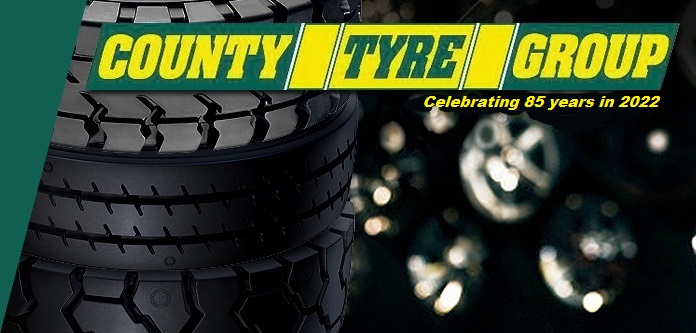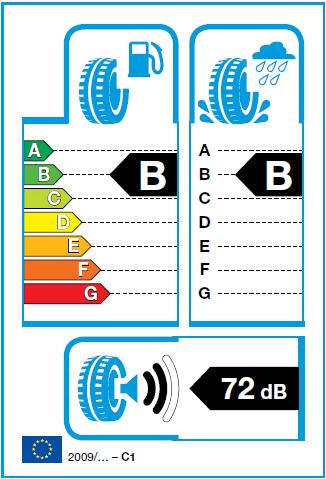

The European Commission has adopted a Regulation on the labelling of tyres which aims to provide end-users of vehicles with clear and relevant information about the quality of the tyre, and to guide them towards choosing a product which is more fuel efficient, has better wet braking and is less noisy. This came into effect on 1st November 2012 for car, van, and truck tyres (class C1, C2, and C3) manufactured from 1st July 2012 onwards.
The exceptions to tyre labelling are racing tyres, remoulds, part-worn’s, temporary tyres, tyres designed to be fitted only to vehicles registered for the first time before 1 October 1990, anything under 10" rim diameter, anything above 25" rim diameter, or anything whose speed rating is under 80km/h.
Fuel efficiency
A tyre which is more fuel efficient helps reduce your driving costs and CO2 emissions. There are seven categories, from A, the most efficient which means you will use the least amount of fuel for your journey, to G, the least fuel efficient. Choosing A-rated tyres over G-rated tyres could reduce your fuel consumption by 7.5%*
Wet braking performance
Wet braking performance is critical to your road safety as it affects how quickly you will be able to stop in wet conditions. There are seven classes. An A-rated tyre provides the shortest braking distances on wet roads whereas a G-rated tyre will have the longest braking distance in the wet. Driving on four A-rated tyres at 50mph can help you stop up to 18m* shorter than if you were driving on four G-rated tyres.
Exterior noise emission
This is the amount of noise made by a tyre when it rolls along the road surface. The tyre’s exterior noise emission is shown by a series of black waves. Three black waves indicate that the tyre produces the most amount of noise on the scale. One black wave indicates the tyre emits the lowest level of noise on the scale.
(Source: European Commission impact assessment SEC (2008) 2860). * When measured according to the test methods set out in Regulation EC 1222/2009
For more information you may want to visit these links:-
‘European commission on Tyre Labelling’:-
http://ec.europa.eu/energy/efficiency/tyres/labelling_en.htm
Tyre labelling regulations explained in detail:-
http://www.ntda.co.uk/images/TyreLabelling.pdf
Tyre labelling guide with video:-
http://www.tyresafe.org/tyre-safety/tyre-labelling-information
Link to Tyre Catalogue – for energy comparisons’:-
www.tyreintelligence.co.uk
Actual fuel savings and road safety depend heavily on the behaviour of drivers, and in particular the following:-

